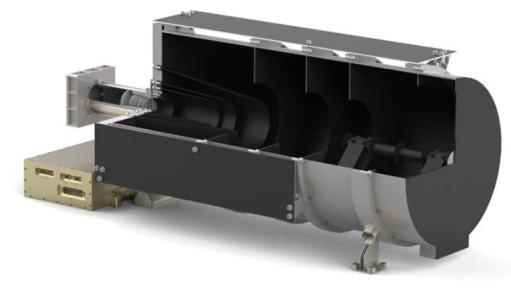Prototype Compact Wide Angle Coronagraph
Programme
GSTP
Programme Reference
G618-009EE
Prime Contractor
STFC RUTHERFORD APPLETON LABORATORY
Start Date
End Date
Status
Closed
Country
United Kingdom

Objectives
Design, develop and test a prototype of a small, space-based coronagraph consisting of a white-light telescope and solar occulter providing performance required for space weather applications within SSA.
Description
In a coronagraph, a small disk in the field of view of a telescope is used to obscure the bright Sun, allowing its outer "atmosphere" - the Corona - to be seen, as during an eclipse. From space, coronal plasma emissions are very clear out to several solar radii (Rs) from the Sun's surface because of the lack of atmospheric scattering. Large-scale eruptions of plasma from energetic events on the Sun are easily monitored and measured. The coronagraphs on SOHO and STEREO have become vital elements for space weather forecasting. However, scientific instruments like those are large and their resolution exceeds what is required for user-oriented space weather services. Similarly, the proposed Proba-3 polarizing spectroscopic coronagraph, for high-resolution images of the inner corona down to 0.02 Rs from the limb, is a radically different instrument from that required for SSA, with an emphasis on diffraction and straylight effects removal.
This activity will design a coronagraph with appropriate field of view, resolution and timing as defined in space weather system studies (1 Mpixel images, FOV to 20 Rs and image cadence 5 minutes). Strong emphasis will be placed on limiting the mass and volume compared to the existing generation of scientific instruments. A wide angle requirement is necessary to enable estimation of plasma cloud extent and velocity. Pre-development, prototyping and testing of key technologies and elements, including optics and electronics will be undertaken to validate the design and reduce development risk. Stray-light rejection will be optimized so that Earth-directed halo CMEs can be detected on a routine basis. The instrument will be deployable on a dedicated small satellite or as a secondary payload on a larger platform. Accommodation constraints (interfaces, data rate, power, mass, thermal, stability pointing requirements, etc.) will be analysed. Phase C/D planning and costing will also be performed.
Application Domain
Space Safety
Technology Domain
4 - Space Systems Environments and Effects
Competence Domain
10-Astrodynamics, Space Debris and Space Environment
Keywords
1-Space Situational Awareness
Initial TRL
TRL 2
Target TRL
TRL 5
Public Document
